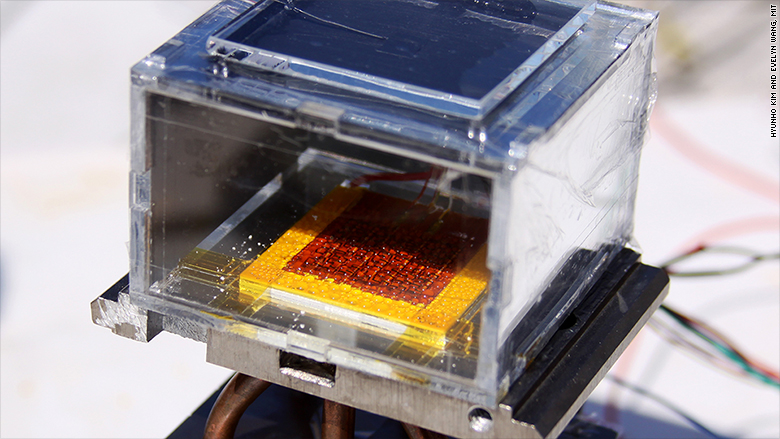A team from the Massachusetts Institute of Technology and the University of California, Berkeley have created a solar-powered device that can produce drinking water out of air, even in desert climates.
While similar methods like atmospheric water generators already exist, this new device works in drier climates and uses less energy- which is good considering two-thirds of the world’s population are experiencing water shortages.
The device looks like a box:
“Inside the box is a layer of a custom metal-organic framework (also called a MOF), which is essentially a material that acts as a sponge to capture as much water as possible when the box is open. Water can be collected from the air and rain.
Once the water is captured, the box is closed manually and exposed to the sun. The sun heats up the material so it releases water from its surface in the vapor phase. The vapor is then converted to the liquid phase with a condenser — which can cool the vapor even in hot climates — to create clean drinking water.”
(MOF’s are one-, two- or three-dimensional compounds and are extremely porous material that water molecules can easily attach to. Check out the video below for a better explanation.)
The device is capable of collecting 2.8 liters of water per kilogram of metal-organic framework used and can do this in areas where the humidity level is as low as 20% (existing devices only work in areas of 50% humidity).
RELATED ARTICLES:
- Energy Secretary Rick Perry: Is Solar Eroding the Electricity Supply?
- Tesla Solar Panels Powering Hawaiian Island
- The Solar Powered Cooker that Stores the Sun’s Energy for Fuel-Free Grilling Every Night
According to Evelyn Wang, associate mechanical engineering professor at MIT and co-author of the paper published in the journal Science, the new system is in the “proof of concept” phase to show it can work. Once they prove that they will need to scale up the prototype as it’s currently the size of a small tissue box.
The goal is for it to be about as big as a carry-on suitcase so it can produce enough water for a family of four. Although the researchers haven’t yet estimated cost, they plan to work with not-for-profits and local governments in the developing world to distribute the device.
Source: CNN












